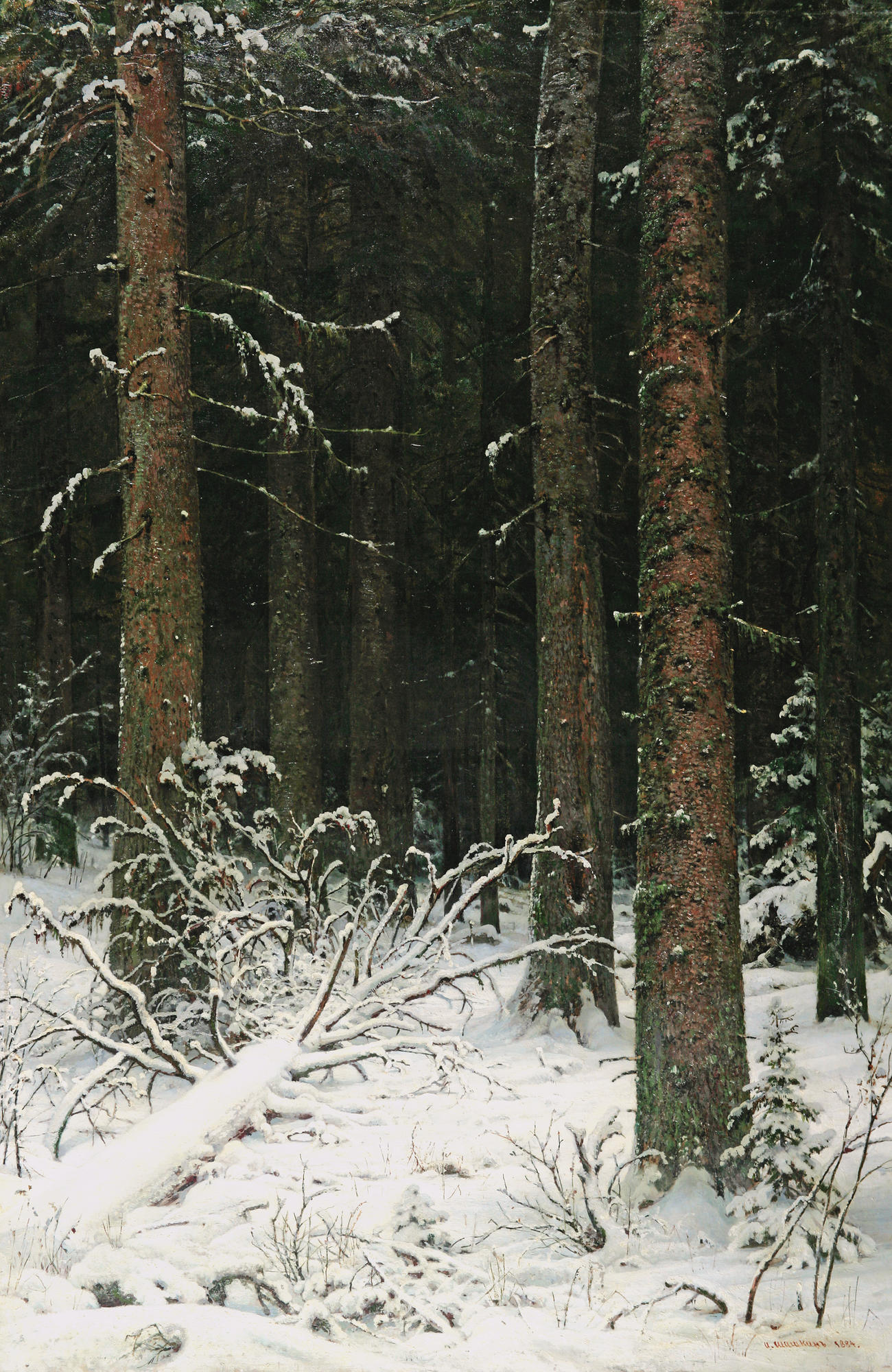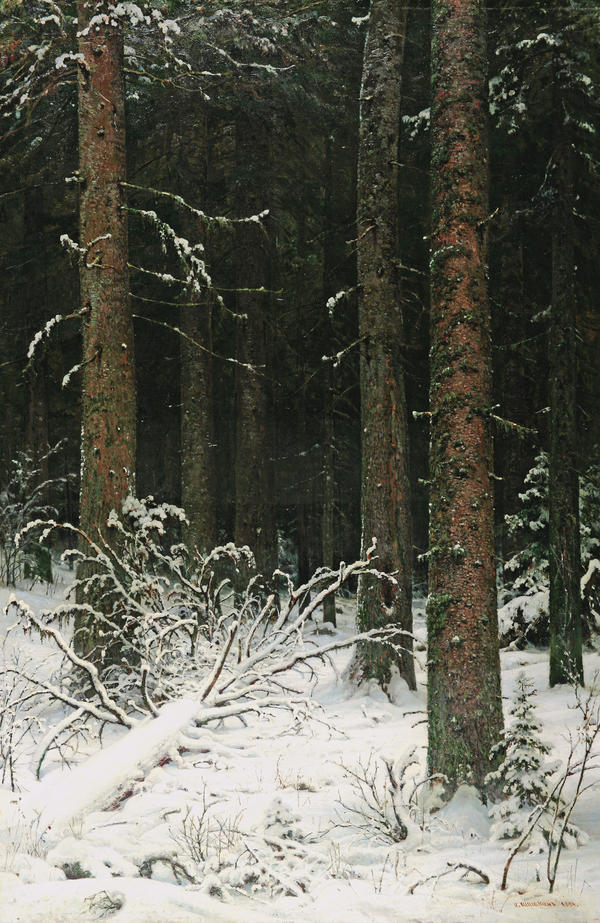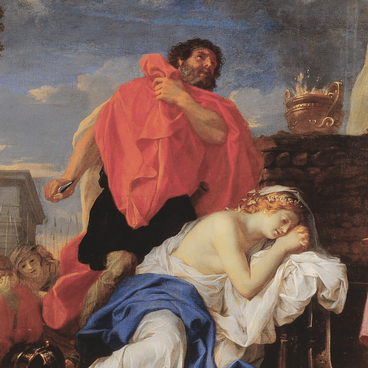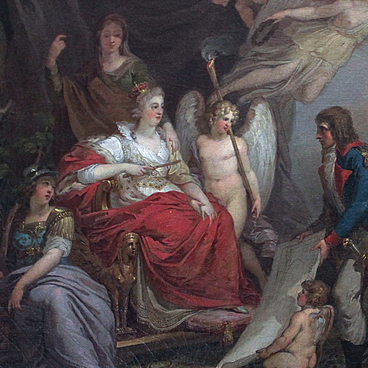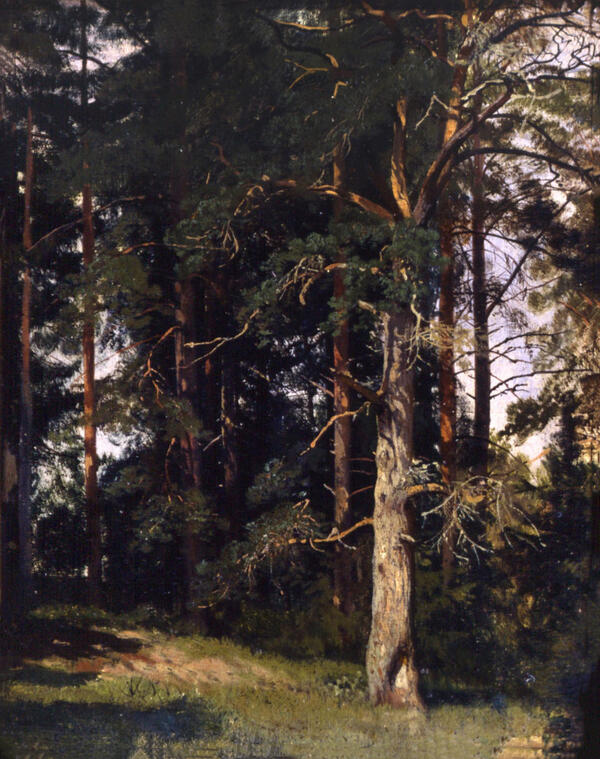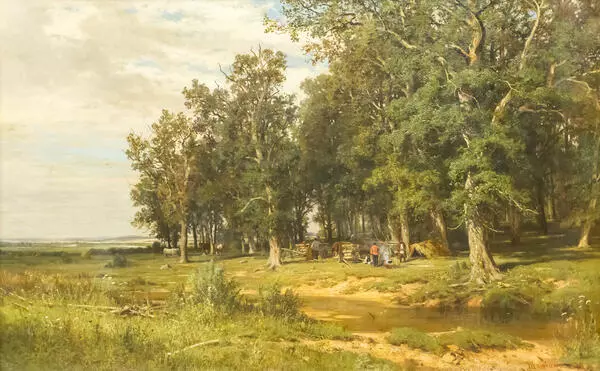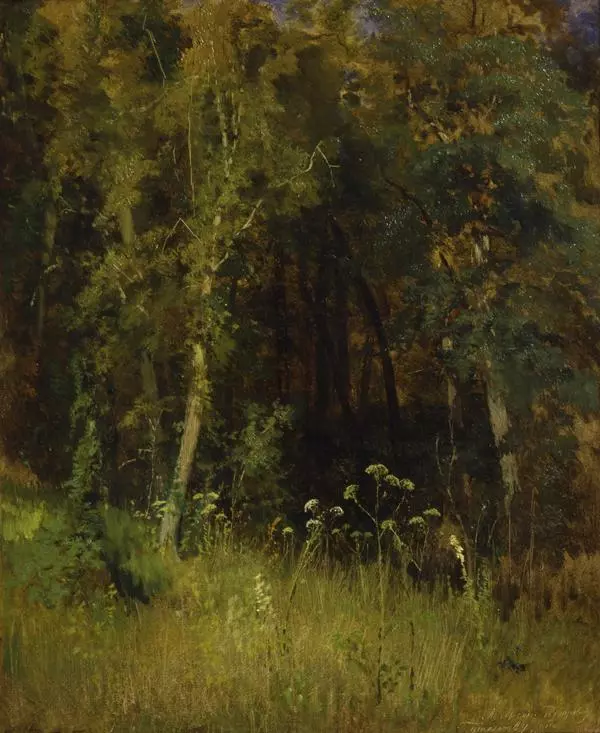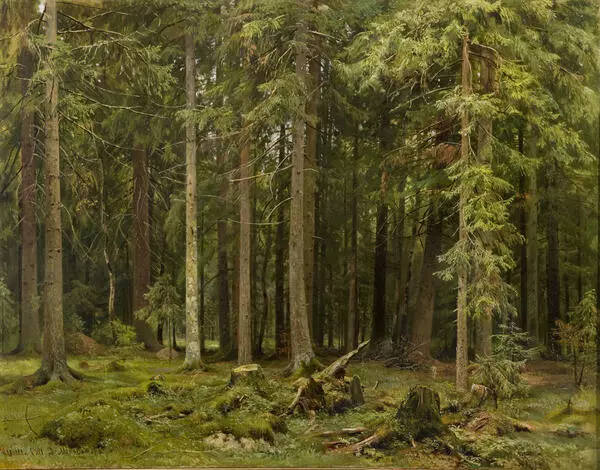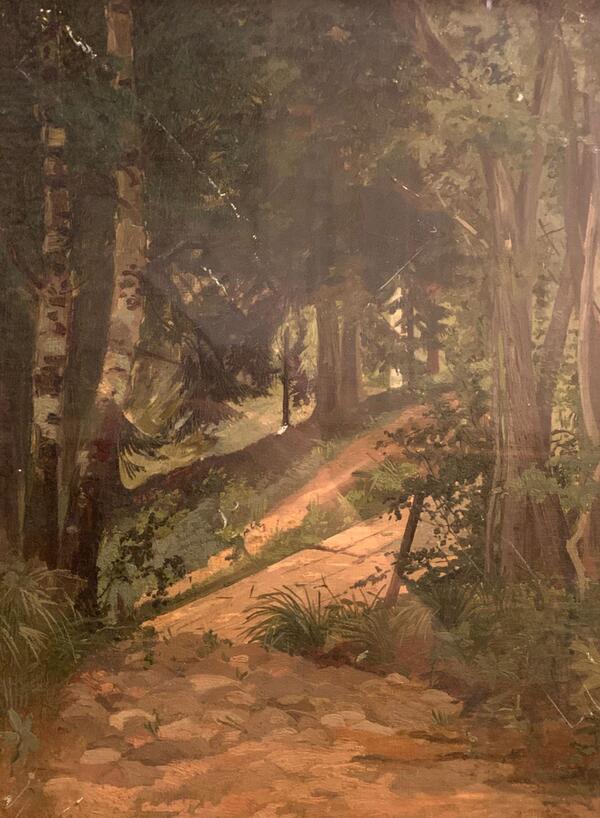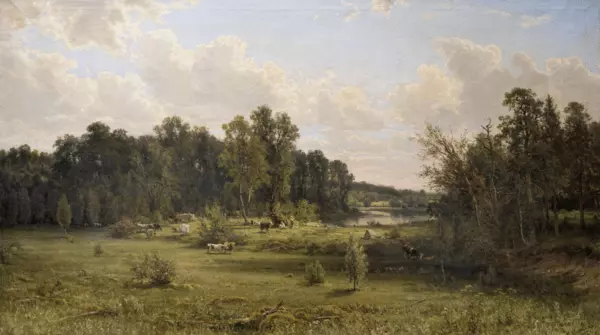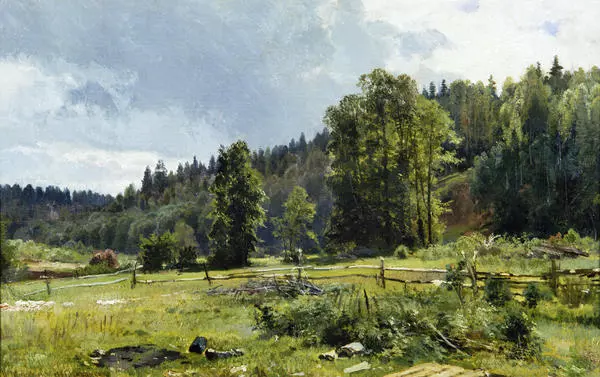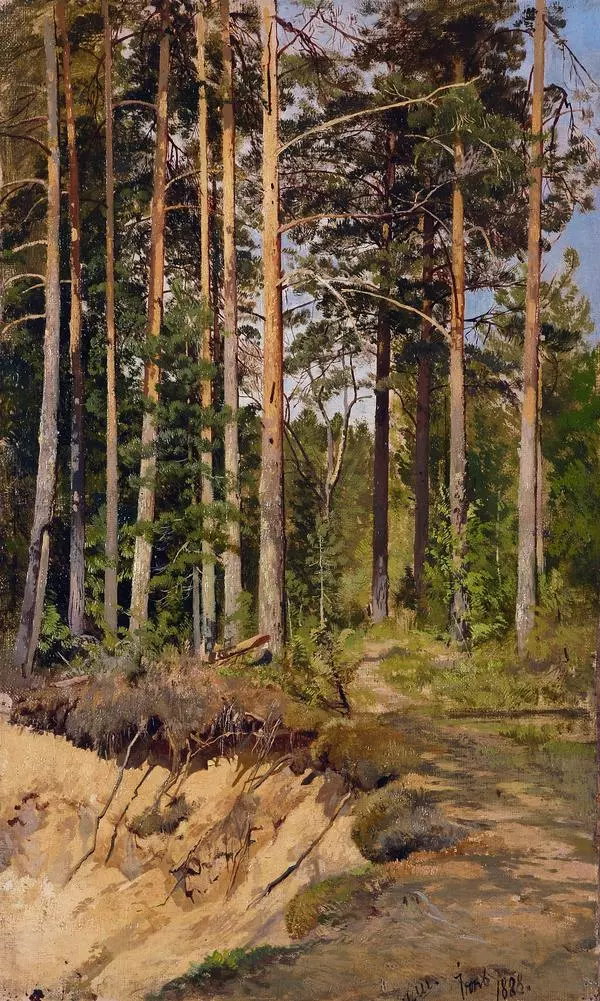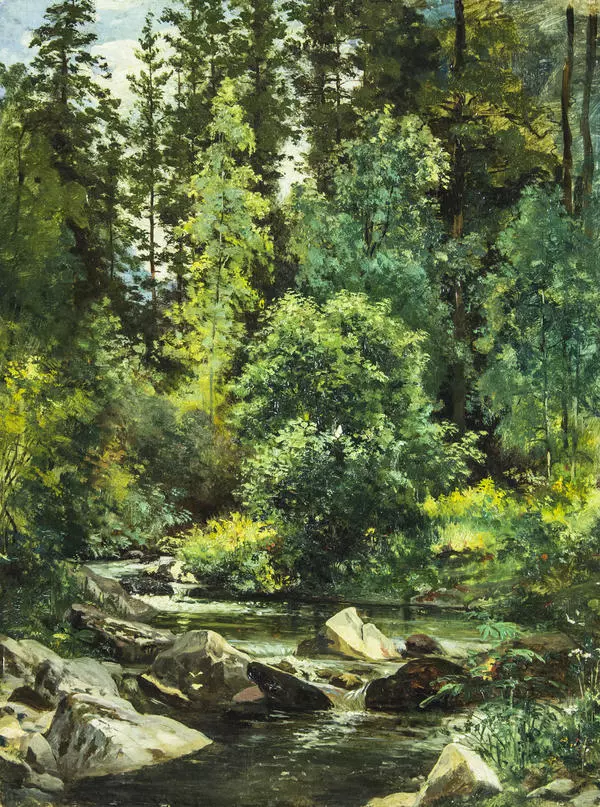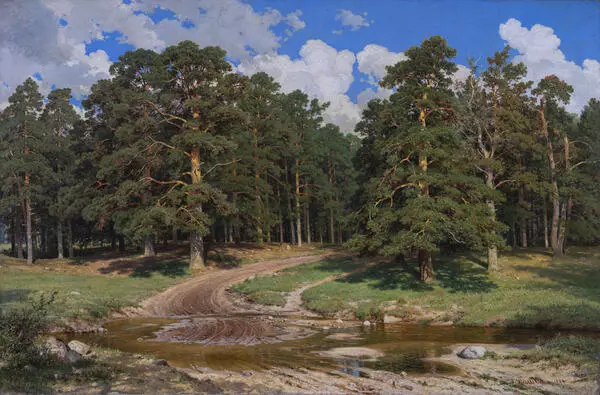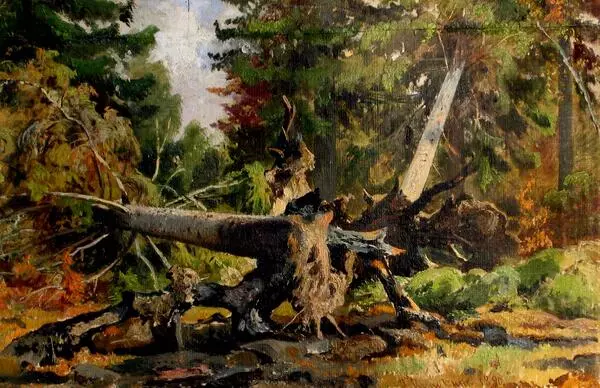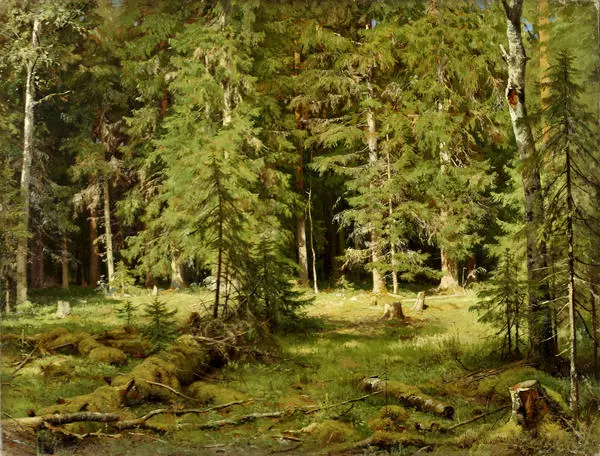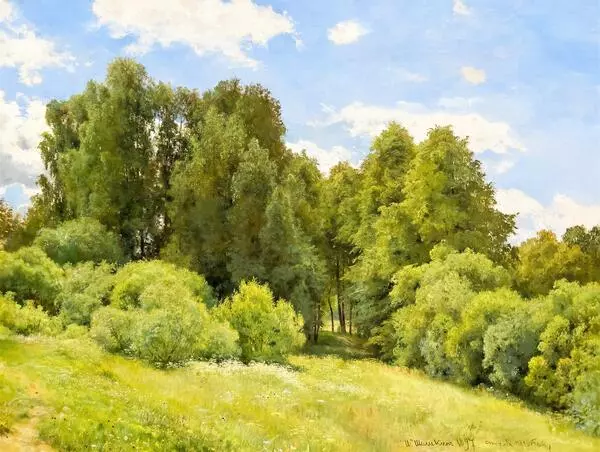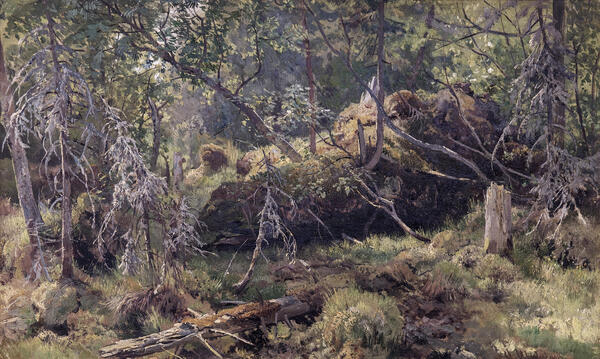Ivan Shishkin was born on January 25, 1832 in Yelabuga, in a merchant family. His relatives disapproved of his desire to become an artist, and only his father rendered support.
In 1856, Shishkin graduated from the Moscow School of Painting and Sculpture, where he studied under the tutorship of portrait painter Apollon Mokritsky. Even in his early works, Shishkin demonstrated a talent for depicting landscapes.
Upon graduation from the Moscow School, Ivan Shishkin studied at the Imperial Academy of Arts in St. Petersburg, in the class of landscape painter Socrates Vorobiev. During this period, pictures of the future master repeatedly received medals and won awards.
Upon graduation, Shishkin embarked on a lengthy trip around Europe and, among other countries, visited Germany and Switzerland. There he honed his technique and for the first time tried engraving with ‘tzarist vodka’, which is a special mixture of acids and bears no relation to the alcoholic beverage. After several years of foreign travels, the artist returned to Russia.
In the mid-1870s, Ivan Shishkin turned to the winter theme, which was a new subject for the conventional landscape prose. He revisited the winter topic in First Snow in 1875, Winter in the Forest. Hoarfrost in 1877, and In the Wild North in 1891. These paintings are part of the Kiev Art Gallery collection. The Fir Forest in Winter was painted in 1884 and became the forerunner of a more synthetic work called Winter, which was created in 1890 and is nowadays in the custody of the State Russian Museum.
Here the artist used the black-and-white colour scheme, both simple and strong, which emphasized the composition’s constructive clarity. The viewer can see a corridor of trees leading deep into the depicted wilderness, which the fallen trunk in the foreground is “pointing” at. Further the path is blocked by a solid wall of spruce thicket; the dense fir forest looks endless. The shallow depth of the visible space sets off, by contrast, the energy of tree growth in height, but the tops of powerful trunks are “cut off” by the upper edge of the canvas. This incompleteness imparts to the landscape the mood of a restrained, dormant force.
In this work, Shishkin foregoes the excessive details, which were so typical of his landscapes of the 1870s: “extra” details are hidden by the snow. The few twigs and old blades of grass emphasize the whiteness of the winter cover and impart an incomparable expressiveness to the entire landscape.
The artist’s works gained popularity during his lifetime: Emperor Alexander III, Grand Duke Pavel Alexandrovich and collector Pavel Tretyakov were among those who purchased his pictures.
The artist’s personal life was quite tragic: twice widowed, he lost his two sons by the first marriage. Shishkin devoted the rest of his days to his work. He died in his studio, while working on his new painting. Among Russian landscape artists, Ivan Shishkin is indisputably ranked as the most powerful painter.
In 1856, Shishkin graduated from the Moscow School of Painting and Sculpture, where he studied under the tutorship of portrait painter Apollon Mokritsky. Even in his early works, Shishkin demonstrated a talent for depicting landscapes.
Upon graduation from the Moscow School, Ivan Shishkin studied at the Imperial Academy of Arts in St. Petersburg, in the class of landscape painter Socrates Vorobiev. During this period, pictures of the future master repeatedly received medals and won awards.
Upon graduation, Shishkin embarked on a lengthy trip around Europe and, among other countries, visited Germany and Switzerland. There he honed his technique and for the first time tried engraving with ‘tzarist vodka’, which is a special mixture of acids and bears no relation to the alcoholic beverage. After several years of foreign travels, the artist returned to Russia.
In the mid-1870s, Ivan Shishkin turned to the winter theme, which was a new subject for the conventional landscape prose. He revisited the winter topic in First Snow in 1875, Winter in the Forest. Hoarfrost in 1877, and In the Wild North in 1891. These paintings are part of the Kiev Art Gallery collection. The Fir Forest in Winter was painted in 1884 and became the forerunner of a more synthetic work called Winter, which was created in 1890 and is nowadays in the custody of the State Russian Museum.
Here the artist used the black-and-white colour scheme, both simple and strong, which emphasized the composition’s constructive clarity. The viewer can see a corridor of trees leading deep into the depicted wilderness, which the fallen trunk in the foreground is “pointing” at. Further the path is blocked by a solid wall of spruce thicket; the dense fir forest looks endless. The shallow depth of the visible space sets off, by contrast, the energy of tree growth in height, but the tops of powerful trunks are “cut off” by the upper edge of the canvas. This incompleteness imparts to the landscape the mood of a restrained, dormant force.
In this work, Shishkin foregoes the excessive details, which were so typical of his landscapes of the 1870s: “extra” details are hidden by the snow. The few twigs and old blades of grass emphasize the whiteness of the winter cover and impart an incomparable expressiveness to the entire landscape.
The artist’s works gained popularity during his lifetime: Emperor Alexander III, Grand Duke Pavel Alexandrovich and collector Pavel Tretyakov were among those who purchased his pictures.
The artist’s personal life was quite tragic: twice widowed, he lost his two sons by the first marriage. Shishkin devoted the rest of his days to his work. He died in his studio, while working on his new painting. Among Russian landscape artists, Ivan Shishkin is indisputably ranked as the most powerful painter.
